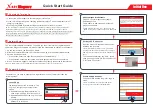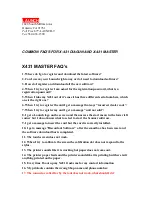
43
5.4 DPF
The Diesel Particle Filter (DPF) function manages DPF regeneration,
DPF component replacement teach-in, and DPF teach-in after
replacing the engine control module (ECM).
The ECM monitors driving style and selects a suitable time to employ
regeneration. Vehicles driven a lot at idling speed and low load will
attempt to regenerate earlier than vehicles driven more with higher load
and speed. For regeneration to take place, a prolonged high exhaust
temperature must be obtained.
In the event of the car being driven in such ways that regeneration is
not possible, i.e., frequent short journeys, a diagnostic trouble code will
eventually be registered in addition to the DPF light and “Check Engine”
indicators displaying. A service regeneration can be requested in the
workshop using the diagnostic tool.
DPF regeneration is used to clear PM (Particulate Matter) from the
DPF filter through continuous combustion oxidation mode (such as
high-temperature heating combustion, fuel additive or catalyst reduce
PM ignition combustion) to stabilize the filter performance.
DPF regeneration may be performed in the following cases:
The exhaust back pressure sensor is replaced.
The PM trap is removed or replaced.
The fuel additive nozzle is removed or replaced.
The catalytic oxidizer is removed or replaced.
The DPF regeneration MIL is on and maintenance is performed.
The DPF regeneration control module is replaced.
The operation guidelines of the DPF function are shown as below:
1. Enter the
DPF
menu and choose relevant models according to the
vehicle being tested.
2. Enter the
DPF regeneration
menu.
3. Read carefully and complete the
requisites
listed before
performing the DPF regeneration function. And press
OK
after
completing the instructions shown.
















































